Improving Student’s Confidence
Overview
All students are required to complete projects as an integral part of their education. Projects provide students with opportunities to develop their thinking skills, and show that they can organize knowledge and ideas into plans and action. To what extent will students who develop their cognitive skills demonstrate more competence, and also grow in confidence as they use the ideas?
These are issues that were addressed by John Dewey in his sequence problem solving approach. They have also been developed by what is generally called the scientific method. But, there have been few easy-to-use visual models to guide students on a day to day basis.

I have assessed many student projects. As a result of those experiences, I noticed that many of the project reports would have been substantially improved if the students had a stronger and more systematic proactive thinking problem solving process. Therefore, I developed what is known as the Margerison Proactive Thinking System. This article outlines the key factors and how students and teachers can use them on educational projects.
Thinking With Confidence
Karl Popper, the renowned philosopher, titled one of his books ‘All Life Is Problem Solving.’ That means students need to develop thinking skills to guide their experience. The way they think will determine not only how they perform in examinations, but also the way by which they develop their contributions to discussions, teamwork and leadership in all aspects of life. Students who learn how to think both proactively and reactively are more likely to develop confidence and self-belief in their ability to solve problems.

This a vital factor in the lives of all the people recognized for their achievements.
- Galileo looked at the sun and stars. Rather than accepting the conventional wisdom, he questioned if our planet Earth was at the centre of the Universe?
- Isaac Newton is reported to have seen an apple fall from a tree and pondered on the meaning of gravity. Rather taking it for granted, he developed a theory and formulae that changed the shape of science.
- Florence Nightingale witnessed soldiers dying from injuries after battles and asked if more could be done to help them. As a result, she developed methods that revolutionized nursing and medical treatment.
These are outstanding examples of amazing people who used their thinking skills to tackle important challenges and problems. As a result, we now have a better understanding of the galaxies, gravity and medical treatments.
Ways of Thinking
Curiosity, combined with a persistence to resolve the issues, was crucial to their success. Students can learn how to organize their curiosity through research projects by clear thinking. Einstein said: “I have no special talent. I am only passionately curious”. He is a great example of a person who combined his curiosity with a determination to find answers to important questions.
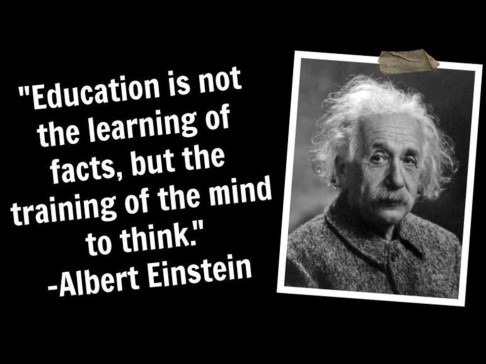
A term that has grown in popularity in education is ‘critical thinking.’ In effect, this means we should not just accept what is written or said, but subject it to assessment. However, the danger is the word critical can imply an attack, but does not provide a positive resolution.
Proactive thinking, in my view, is more important and it can be taught. This involves anticipating causes and consequences, rather than just being critical after the event. That is a way in which students can become more confident and effective in their self-development.
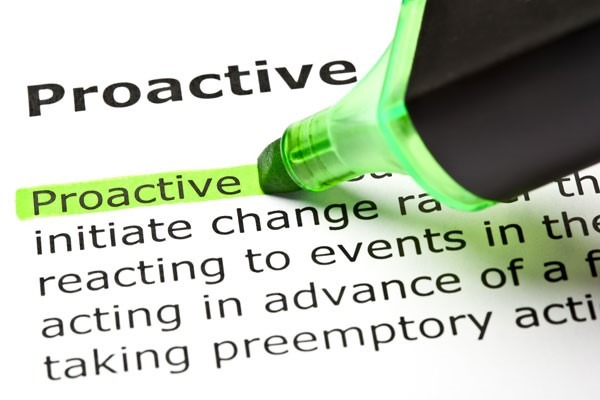
Amazing People & Proactive Thinking
In my research of over 500 amazing people, I noticed that proactive thinking was one of the key characteristics that enabled them to succeed.
- Dr Marie Curie was proactive as she searched for ways and means of treating cancer.
- President Lincoln was proactive in tackling issues of slavery.
- Charles Dickens witnessed gross poverty and responded by writing his novels to awaken the conscience of those in power.
- Harriet Tubman was proactive by escaping slavery and then organizing the route for other slaves to do likewise.
- Oscar Schindler was proactive in helping those who worked in his organization escape deportation to death camps.
- Business people like Coco Chanel, Walt Disney, Elizabeth Arden and William Lever where proactive to convert their ideas into innovations that created employment and wealth.

They had what Dr Howard Gardner calls ‘wit’ and ‘grit’. His 1983 book, ‘Frames of Mind’ has become a classic, dispelling the notion that there is only one form of intelligence. Gardner identified at least eight forms of intelligence, such as musical, literary, mathematical, and ways by which we can develop each of the key areas. Developing confidence likewise needs to be specific. For example, just because you have confidence in solving a mathematical problem does not mean you have confidence in writing a book, or playing the piano. Developing one’s proactive thinking ability applies to all of these key areas that Gardner listed.
The Margerison Proactive Thinking® System
Therefore, to assist students and teachers, I developed an easy to use visual system. It provides a tried and tested common language for discussing and completing project assignments. The model is based on the following key factors –
Data – information that is known or to be found, relating to a project problem.
Assess – ways and means of understanding/explaining the meaning of the data.
Decisions – the process whereby choices are made to resolve the problem issues.
Applications – the action taken to implement the decisions and the learning gained.
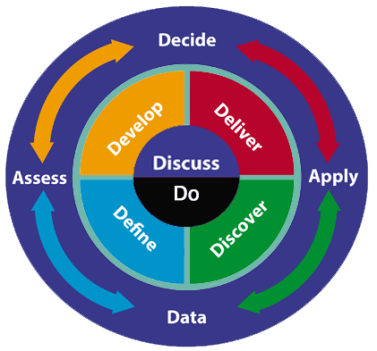
For ease of reference, these are sometimes referred to as the DADA Thinking Functions.

Defining – When starting a project, students need to define what they are going to do and why. Therefore, a key step is to set some objectives, even though they may change as more information and data becomes available. In the process, it is important to identify important questions that help clarify the issues to be addressed. Also, the project needs to be defined in terms of the amount of time to be allocated, the people who will be involved, and the costs.
Discovering – The next stage is to find relevant information associated with the objectives and questions posed. This is the research and enquiry phase. Developing skills in discovery is one of the most important aspects of proactive problem solving. Professor Reg Revans, who developed the process of action learning, said discovery is about questions and having the time to share them, and talk over the issues with others who have a common interest.


Developing – Once one has gathered data, the next phase is to develop an understanding through analysis and explanation. That usually requires experience, as well as logical reasoning. What may sound good in theory has to meet the ultimate test of practical application. Therefore, it is important to go beyond that and gain feedback on the options and choices, before investing heavily in a solution
Delivering – Based on the criteria and objectives, choices can be made and action taken to resolve the original problem or challenge. This will involve teamwork planning and allocating roles to those with skills in each area, and gaining the necessary resources. It is important to remember the old saying: ‘after all is said and done, there is more said than done.‘ Effective implementation is the essence of delivery


Discussing – Successful teams share and compare information as they proceed, in what is increasingly called an agile and responsive way. There are many elements to this and it requires a strong communication culture of teamwork and cooperation to be established, amongst all involved.
Doing – It seems obvious but, too often, all the preparatory work is undermined by people not completing the assignment or project according to plan. Therefore, the skills of organization and ‘follow up’ and ‘follow through’ are important. The old saying of, ‘Say what you will do and do what you say,’ is the key to success.

The above six steps are proven helpful guidelines to anyone involved in problem solving.
Applications In Schools & Keywords
Students have to absorb a lot of content, as they go from lesson to lesson. The width and breadth of information in science, mathematics, literature, history, art and many other subjects can put considerable stress on even the best of students. Many can be left behind, as they struggle with the different concepts and ideas.
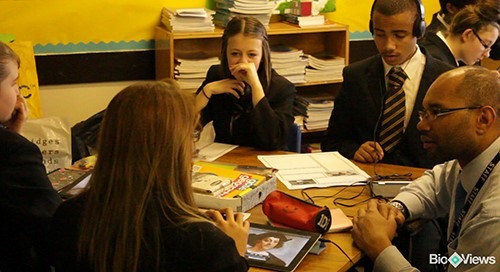
Having a shared approach to problem solving can help all students. The Margerison Proactive Thinking Skills Model provides an easy to understand language and visual framework for both discussion and project applications.
Students can memorize the key steps and say each day, ‘I must – Define, Discover, Develop and Deliver via Discussion and Doing.’
It is useful for students to write these words into their workbooks and use them daily. Once they become part of everyday thinking, then students find it easier to start and finish projects.
These key words help build confidence, as students have a cognitive framework on which to build. Positive self-talk is important when confronting a challenge or problem. A phrase that has proved helpful for students is: ‘In order to solve this challenge / problem I will ‘Define, Discover, Develop, Deliver.’
The Proactive Process In Action
It is useful for students to have a short definition for each of the skills, on which they can expand as required when dealing with a specific project.
- Define is the key starting word for any assignment, to define what has to be done, why and when.
- Discover provides the key word for research and enquiry to find the requisite information.
- Develop provides the important word to create options by developing ideas and choices for action.
- Deliver is the output word that enables students to focus on the requirements for completion.
In the process, it is important to focus on the communication process two key aspects, as shown below.
- Discuss is the key word to encourage teamwork and involve people who can help.
- Do is the word that helps them focus on action, rather than just thought.
We all learn through experience. The Margerison Proactive Thinking Model provides a way to categorize and enhance those experiences. That leads to improved perception, which is at the heart of effective problem solving. In the process, we learn by asking questions, gathering data, assessing options and implementing best choices to gain feedback.
Examples
In my work with students, opportunities have been provided to explore what it was like to meet amazing people and see how they went about problem solving. In one class, the students were invited to ‘fly through time’ and sail with Captain Cook on his breakthrough voyages around the world during the second half of 18th century. The students were asked to consider what it was like to live on one of the old sailing boats.
In the process, via proactive thinking, they defined a project, to discover more about the issues involved for the captain, officers and sailors. As a result, the students were able to develop and deliver well thought out presentations. That involved discussions in groups and the exchange of ideas and resources. On each occasion, it was possible to assess the learning the students gained and their confidence grew, as observed in their presentations. The teacher reported an average 20% improvement in performance compared to previous groups. For more information on this example please click HERE
The same process has been used in science classes. The importance of defining the project is crucial, before discovering data and developing conclusions and delivering results. Einstein said that if his life depended on finding the right solution in one hour, he would spend the first 55 minutes clarifying the problem. That is the start point for proactive thinking.

It helps if students use the 6 key question words of:
- What does this mean?
- Why is it important?
- Who has experience and contributed on these issues?
- Where was that done?
- When was that?
- How can this be developed further?
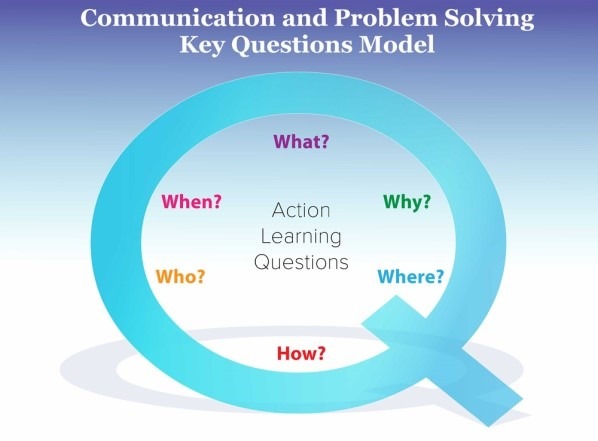
Summary
Confidence is at the heart of what we need to improve. By providing students with a proactive thinking language and frame of reference, we can increase their confidence. These proactive thinking skills can be applied both in school, at work and in everyday life. In most cases, the solutions cannot be achieved by one person alone. They require discussion with others, usually in teams, to share and compare information.

Proactive learning skills can be developed through practice. The systematic steps and stages outlined in the Margerison Proactive Learning System will speed up the process and help students produce amazing results. The more that students use the model, as a framework, the more they will develop their confidence to tackle problems, both across curriculum subjects as well in their personal life.
 Dr Charles Margerison, founder of Amazing People Worldwide and Amazing People Schools, is a Psychologist. As well as working in educational organisations for many years, he has consulted widely for major corporates in the fields of organizational and educational psychology. He was previously Professor of Management at Cranfield University, UK, and the University of Queensland, Australia. He founded Amazing People Worldwide in 2006 and is supported by a dedicated global team. Dr Margerison is a member of the Royal Institution, Royal Society of Literature, Historical Association, and Association of Business Psychology. He previously co-founded Emerald Publishing Ltd, and Team Management Systems, a team-building tool, which is now used in 190 countries worldwide.
Dr Charles Margerison, founder of Amazing People Worldwide and Amazing People Schools, is a Psychologist. As well as working in educational organisations for many years, he has consulted widely for major corporates in the fields of organizational and educational psychology. He was previously Professor of Management at Cranfield University, UK, and the University of Queensland, Australia. He founded Amazing People Worldwide in 2006 and is supported by a dedicated global team. Dr Margerison is a member of the Royal Institution, Royal Society of Literature, Historical Association, and Association of Business Psychology. He previously co-founded Emerald Publishing Ltd, and Team Management Systems, a team-building tool, which is now used in 190 countries worldwide.
